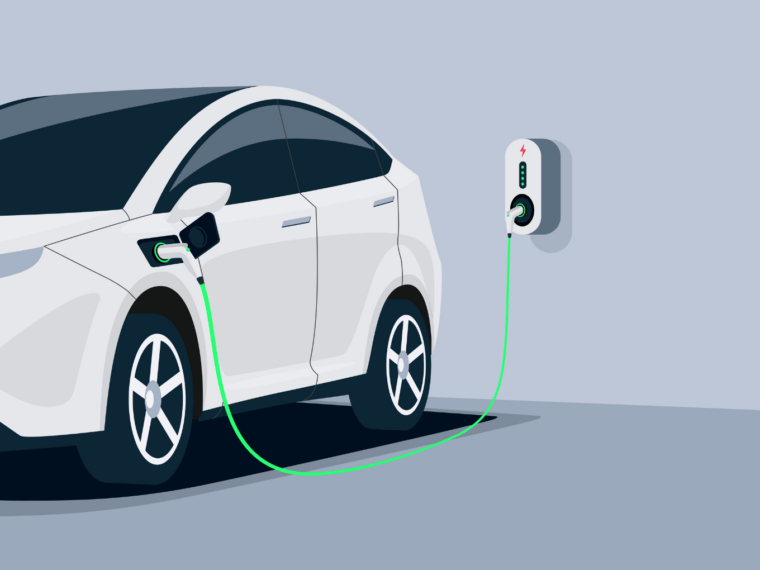
The government intends to grow EV sales in India to capture the markets of 30% of private cars, 70% of commercial vehicles and 80% of two and three-wheelers by 2030
Considering that EVs’ share of all vehicle sales in India has grown from 0.75% in 2019 to over 4% for the first six months of 2022, if this trend continues and picks up further momentum, the target should be achieved well in time
Accelerating the transition to EVs in India can be a significant contributor to making mobility more sustainable and affordable for future generations
The government has stated that it intends to grow electric vehicle (EV) sales in India to capture the markets of 30% of private cars, 70% of commercial vehicles and 80% of two and three-wheelers by 2030.
The target may appear daunting at first, but consider that EVs’ share of all vehicle sales in India has grown from 0.75% in 2019 to over 4% for the first six months of 2022. If this trend continues and picks up further momentum, which seems likely, the target should be achieved well in time.
There are several factors behind this optimism. First, EV prices are falling consistently and are no longer as steep when compared to conventional ICE (petrol, diesel, or CNG) vehicles.
Nitin Gadkari, the Union Road Transport and Highways Minister, stated in June that the price disparity would be eliminated by next year. The reduction in GST on EVs from 12% to 5% is a step in the right direction.
Second, a variety of factors are coming together to make owning and running an EV as frictionless as that of an ICE vehicle. High fuel prices are a powerful incentive for all categories of vehicle buyers to switch over to an EV.
This is driven by the fact that the running costs of an all-electric vehicle are currently 1-2 per kilometre, which is one-tenth of the cost of vehicles that run on petrol or diesel. The fuel savings are, in fact, a major reason for a more aggressive adoption of EVs in the commercial vehicle category, not just in India, but globally.
Hurdles EVs Need To Cross
Aside from the purchase price and operational costs, one major factor discouraging most buyers from purchasing EVs in the first place is ‘range anxiety’.
This is exacerbated by regular power outages in most Indian states, and a poor public charging infrastructure that currently exists with less than 3,000 functional charging stations nationwide. Of course, there is a huge ongoing effort to build EV charging stations in all parts of the country with public and private participation.
A recent research report said that India would need at least 20 lakh public charging stations nationwide by 2030 if the government’s goal for EV adoption is achieved. 5 lakh of these are already in the pipeline.
Once we recognise that charging concerns are the biggest barrier to widespread EV adoption, our primary focus can shift to mitigating these concerns. Today, it takes several hours to fully charge an EV, whereas an ICE vehicle can be refuelled in a matter of minutes. In my opinion, there are three interventions required to help potential EV buyers overcome range anxiety.
Private Charging Infrastructure
First, an EV buyer’s home will always be the cheapest and most convenient place to charge an EV. In fact, in 90% of use cases, home charging is and will remain the preferred option.
Public charging stations are not only expensive to use, but they are also unsuitable for fully charging an EV due to the time it would take, not to mention the battery degradation caused by fast charging. Improving the quality and consistency of power supply to homes must thus be the top priority.
A Functional Public Charging Infrastructure
Second, more policy incentives are required for public charging infrastructure to become financially and operationally viable on a large enough scale. Further, these incentives or subsidies must cover charging equipment, the cost of power, as well as lease or rental costs.
A functional public charging infrastructure is only possible if the costs of running and operating them are carefully calibrated against the revenues it is likely to generate, or else the loss-making stations will simply shut down.
Ultimately, if end-users must pay a significantly higher price to use a public charging station, they will simply avoid using one, reducing station owners’ revenues even further.
Consistent R&D
Third, all EV manufacturers must prioritise continuous research and development of new technologies that either increase the vehicle’s range or reduce the time required to fully charge the EV. More than just fast charging, having more robust products with greater range is an effective antidote to ‘range anxiety.’
Policy measures and incentives for manufacturers that are appropriate and targeted can help to accelerate the development and commercialisation of technologies that support this goal.
Conclusion
To summarise, while the transition from internal combustion engines to electric vehicles is unavoidable, as it is a global phenomenon, accelerating this transition in India can be a significant contributor to making mobility more sustainable and affordable for future generations.
All we need is close collaboration between various government ministries and departments at the municipal, state, and federal levels, as well as between government and private industry.































 Ad-lite browsing experience
Ad-lite browsing experience